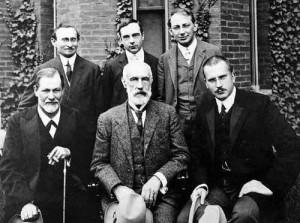There are many ways of studying and working with the depth of the psyche. The term psyche denotes the soul–the very substance of who we are as human beings in the world. Psyche refers to what we know about ourselves, and to what we don’t know about ourselves. Both the known and the unknown. What we know is referred to as conscious, and what we don’t know as unconscious. In reality, we are always a complicated mixture of both known and unknown.
So-called “depth psychology” and “depth psychotherapy” or “analysis” are especially interested in how the deep unconscious levels of the psyche operate. Depth psychologies argue that–contrary to popular opinion in our time–the bulk of who we are exists unconsciously. For the most part, we are unknown to ourselves, or known only partially. We tend to think that we know more than we do, and that we are in control of more than we are in control of. Yet we cannot escape the fact that the psyche resists our attempts to know and to control, and ultimately demands a sacrifice of such attempts. What we can do is listen to the symptoms, dreams, ideas, feelings, human relationships, and images that the psyche sends our way. A new, less troubled, more creative relationship to our deepest selves can then take root and begin to change our lives.
Working out psychological difficulties in therapy therefore means facing the unconscious, and listening to what it has to tell the client and the therapist. That’s the nature of the conversation in therapy. It is a conversation with the psyche that generates therapeutic changes over time.
The depth psychologist Carl Jung elaborated a depth psychology in the early and middle parts of the 20th century. Jung was a close associate of Sigmund Freud’s for a period of years. Just as his career seemed to be advancing towards its high point, Jung left Freud’s movement of psychoanalysis, and spent the rest of his career developing his own theories. The depth psychologies begin with figures such as Jung and Freud, and include many other, more recent psychologists who have changed the field of psychotherapy. Many new theorists have added to, challenged, refined, and re-imagined the psychologies of these two founders of depth psychotherapy and analysis.
Now we are at a crossroads in the field of depth psychology. The old divisions between differing schools of thought are becoming less and less interesting. The points of connection between the depth psychologies and psychotherapies are what hold more interest now. The reason for this is simple. All of these ways of thinking about the psyche and about therapy are attempting to understand what happens in therapy. The point of unity is the experience of therapy itself, and there are many ways of trying to understand what happens there, and how individuals undergo processes of psychological change.

